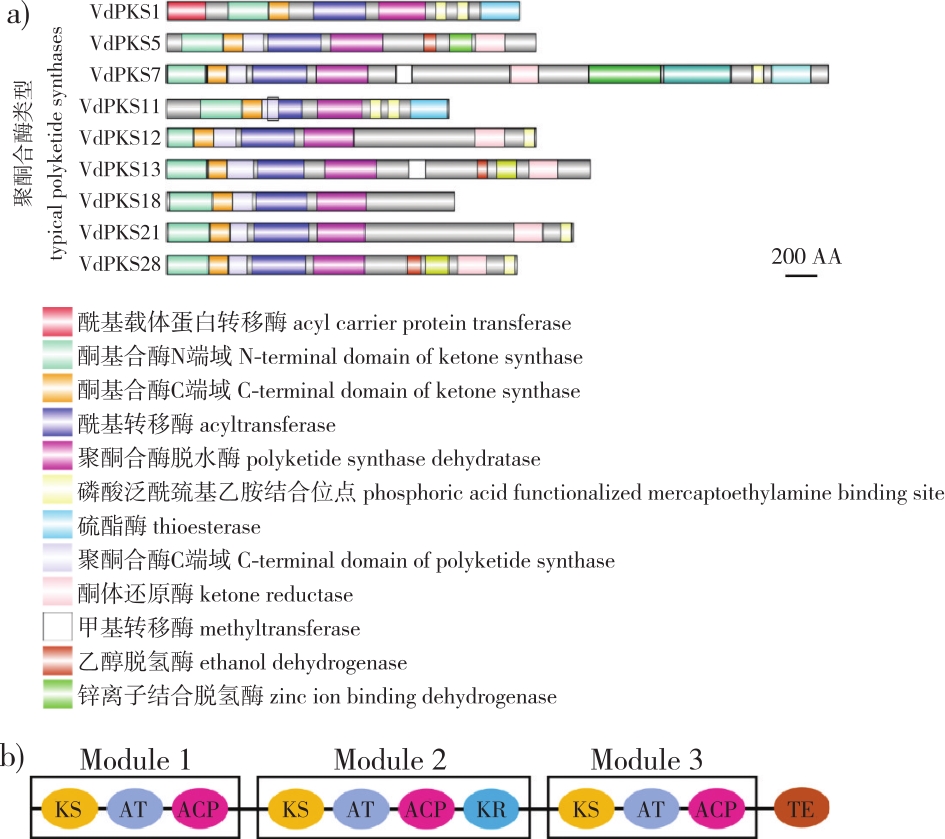 PDF(2128 KB)
PDF(2128 KB)


Research progress on the polyketone secondary metabolites from phytopathogenic fungi
SU Shengrong, CHEN Fengmao, LI Huan, WANG Lichao
Journal of Nanjing Forestry University (Natural Sciences Edition) ›› 2025, Vol. 49 ›› Issue (4) : 285-292.
 PDF(2128 KB)
PDF(2128 KB)
 PDF(2128 KB)
PDF(2128 KB)
Research progress on the polyketone secondary metabolites from phytopathogenic fungi
During host-pathogen interaction, pathogenic fungi facilitate host invasion and pathogenesis through the production of secondary metabolites. Fungal polyketides, catalyzed by polyketide synthase (PKS), represent the most abundant class of bioactive metabolites in fungi, they can establish phytopathogenic fungi successful infections, by synthesizing key pigments, virulence factors, and mycotoxins to evade and disrupt host plant immune mechanisms. This review systematically examines the structural characteristics, classification, biological functions, and metabolic regulation of fungal type Ⅰ PKS. Furthermore, we highlight recent advances in characterizing polyketide compounds and their biosynthetic gene clusters in plant-pathogenic fungi. Potential future research directions for fungal polyketides are prospected, with emphasis on their role in fungal pathogenicity. Collectively, this work aims to provide novel insights and methodological frameworks for elucidating pathogenic mechanisms of fungal infections and developing targeted disease control strategies.

filamentous fungi / polyketide / gene cluster / pathogenic function / regulation mechanism
| [1] |
|
| [2] |
|
| [3] |
|
| [4] |
|
| [5] |
|
| [6] |
|
| [7] |
|
| [8] |
|
| [9] |
|
| [10] |
|
| [11] |
|
| [12] |
|
| [13] |
许杨, 魏康霞. 真菌聚酮合酶基因的研究进展[J]. 食品与生物技术学报, 2008, 27(2):1-5.
|
| [14] |
|
| [15] |
|
| [16] |
|
| [17] |
|
| [18] |
|
| [19] |
朱赫, 纪明山. 具有除草活性植物病原真菌毒素的作用模式[J]. 杂草科学, 2014, 32(4):1-7.
|
| [20] |
陈锡玮, 许蒙, 冯程, 等. 真菌聚酮化合物生物合成研究进展[J]. 生物工程学报, 2018, 34(2):151-164.
|
| [21] |
|
| [22] |
|
| [23] |
王洪秀, 张倩, 王玲杰, 等. 链格孢菌毒素合成相关基因研究进展[J]. 中国生物工程杂志, 2015, 35(11):92-98.
|
| [24] |
刘思远, 申东晨, 刘峥, 等. 不同水曲柳褐斑病病级叶片的微生物多样性[J]. 森林工程, 2024, 40 (1): 1-8.
|
| [25] |
|
| [26] |
|
| [27] |
|
| [28] |
赵彦婷. 拟南芥和番茄对神经鞘脂类似类真菌毒素的抗性机理研究[D]. 杭州: 浙江大学, 2014.
|
| [29] |
曹志艳, 杨胜勇, 董金皋. 植物病原真菌黑色素与致病性关系的研究进展[J]. 微生物学通报, 2006, 33(1):154-158.
|
| [30] |
|
| [31] |
|
| [32] |
|
| [33] |
|
| [34] |
|
| [35] |
|
| [36] |
|
| [37] |
|
| [38] |
|
| [39] |
|
| [40] |
|
| [41] |
|
| [42] |
|
| [43] |
|
| [44] |
|
| [45] |
|
| [46] |
|
| [47] |
|
| [48] |
|
| [49] |
|
| [50] |
|
| [51] |
|
| [52] |
|
| [53] |
|
| [54] |
|
| [55] |
|
| [56] |
|
| [57] |
|
| [58] |
|
| [59] |
|
| [60] |
|
| [61] |
|
/
| 〈 |
|
〉 |